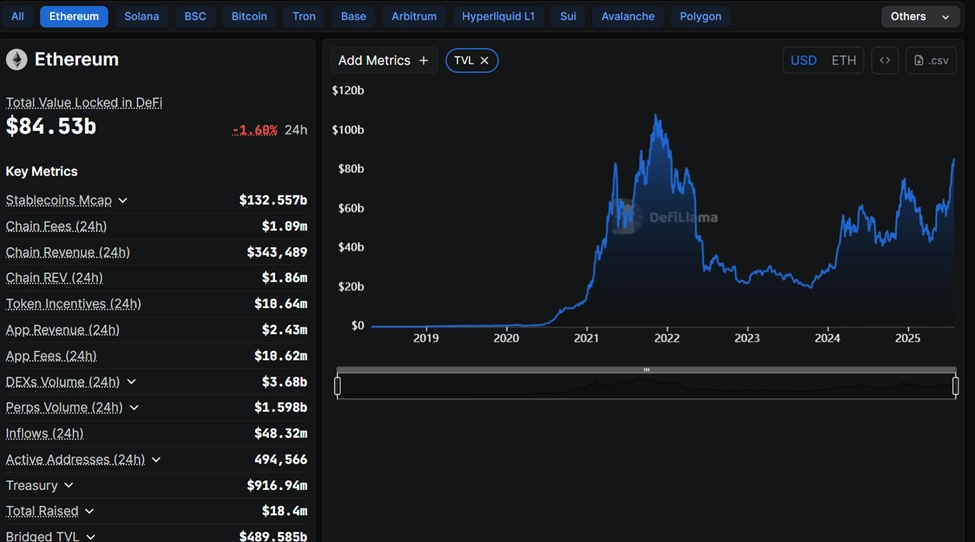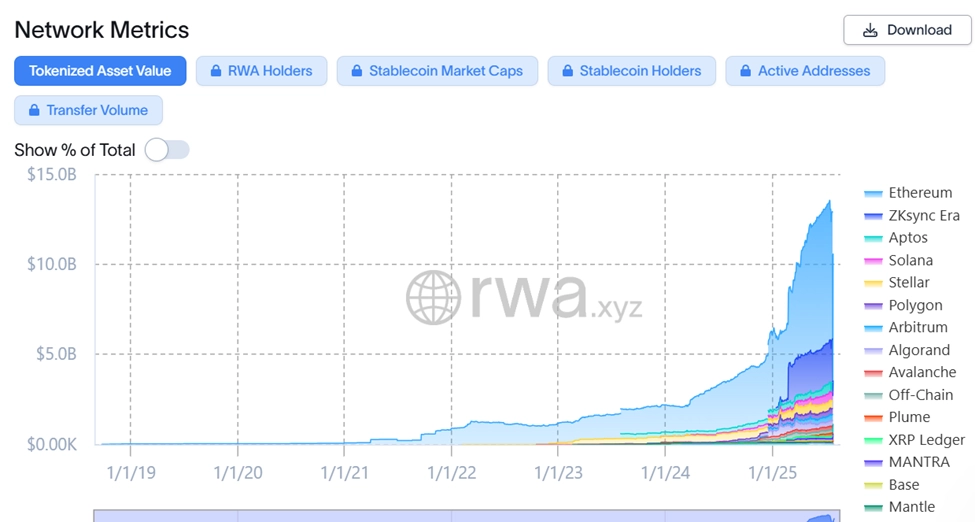10 years ago, Ethereum launched with a promise to reinvent the internet. Today, it is the engine behind a $75 billion decentralized economy, powering everything from meme coins to multi-billion-dollar institutional finance.
What began as a whitepaper by a teenage cryptographer is now the worlds programmable financial backbone. This retrospective traces Ethereums defining breakthroughs, crises, and transformationsand asks what the next decade holds for the chain that never sleeps.
Ethereums story began in 2013, when Vitalik Buterin envisioned a blockchain far more versatile than Bitcoin.
Alongside Gavin Wood, Charles Hoskinson, Anthony Di Iorio, and Joseph Lubin, Buterin proposed a decentralized world computer, capable of executing smart contracts and hosting trustless applications.
By mid-2014, Ethereum raised over $18 million in its presale. On July 30, 2015, the genesis block was mined, ushering in a new era of blockchain programmability.
Buterins whitepaper introduced smart contracts, self-executing code that automates agreements without intermediaries. It wasnt just a technical leap; it was a philosophical shift toward decentralized coordination at scale.
With only hours left to Ethereums ten-year anniversary, all this history comes to mind, with co-founder Joseph Lubin among bearers of the ceremonial NFT Torch.
Ethereums first existential crisis came swiftly. In 2016, The DAOan early decentralized venture fundraised $150 million in ETH. However, a vulnerability in its smart contract allowed an attacker to siphon 3.6 million ETH, worth around $11 billion at the time.
The community faced a defining question: should the blockchain remain immutable or be rewritten to undo the hack? Meanwhile, TenX CEO Toby Hoenisch was named as the perpetrator.
A controversial hard fork, backed by more than 85% of the network, reversed the exploit and returned the stolen funds. Those who disagreed continued on Ethereum Classic (ETC).
This event reshaped Ethereums culture, exposing the dangers of unvetted code. It also sparked a long-running debate over governance, proving that Ethereum wasnt just codeit was community.
Ironically, the failure of The DAO paved the way for Ethereums next explosive use case: In i tial Coin Offerings (ICOs).
The ERC-20 standard made it easy for anyone to issue a token on Ethereum. By 2017, projects like EOS, Tezos, and Bancor were raising billions.
Ethereum became a decentralized Kickstarter, enabling startups to bypass traditional funding routes. However, the gold rush also drew scammers, attracting regulatory fire, particularly from the SEC (Securities and Exchange Commission).
Still, Ethereum had found its product-market fit. It was the platform for bootstrapping new economic systems.
2020 marked another revolution for Ethereum Decentralized Finance (DeFi). Protocols like Uniswap, Aave, Compound, and MakerDAO offered trustless borrowing, lending, trading, and yield farming. Total value locked surged past $11 billion during DeFi Summer.
 Ethereum TVL. Source: DefiLlama
Ethereum TVL. Source: DefiLlama DeFi displayed Ethereums composability, highlighting how apps could build on one another like Lego blocks.
However, the success also strained the network, causing fees to skyrocket. This priced out small users and highlighted the urgent need for scalability.
Yet, the innovation couldnt be ignored. DeFi demonstrated that Ethereum wasnt just hosting applicationsit was rewriting the rules of finance.
In September 2022, Ethereum executed The Merge, transitioning from proof-of-work (PoW) to proof-of-stake (PoS). This slashed energy use by over 99.95% and turned ETH into a deflationary asset, thanks to EIP-1559.
It was a historic technical feat. Ethereum had swapped out its consensus engine mid-flight, aligning the network with global sustainability goals.
However, scalability still loomed as the next frontier, pushing focus to Layer-2 (L2) solutions.
Post-Merge: Scaling the Settlement Layer
Ethereums roadmap evolved post-Merge. In 2023, the Shapella upgrade enabled staked ETH withdrawals.
In 2024, Dencun (Cancun-Deneb) introduced proto-danksharding (EIP-4844), slashing Layer 2 data fees via blobs.
Rollups like Arbitrum, Optimism, and Base matured quickly, pushing Ethereums effective throughput beyond 250 transactions per second (TPS). Institutions took notice. BlackRocks BUIDL tokenized fund, launched in 2024, runs on Ethereum.
Ethereum started as a smart contract platform. Ten years later, it underpins a growing share of global finance: ETH ETFs in the US, ETH in corporate and DAO treasuries, and major institutions like BlackRock tokenizing funds on Ethereum, Hart Lambur, Co-founder of Risk Labs, said in a statement to BeInCrypto.
The recent Pectra upgrade in 2025, featuring EIP-3074 and Verkle Trees, further improves wallet UX and data handling. This lays the groundwork for broader adoption and modular blockchain design.
Despite scaling progress, Ethereums UX remains fragmented. Transitioning between L2s can be slow, costly, and intimidating for non-experts.
The real endgame is straightforward. A giant payments and exchange network that connects every blockchain. If most assets become tokenizedmoney, equities, bonds, real-world assetsEthereum becomes the settlement and payment layer for all things of value on the internet, Lambur explained.
Notably, this vision depends on solving the interoperability UX. Ethereum can scale now (thanks to L2s). However, this broke the experience, as moving between chains is clunky and expensive.
Fix that, and Ethereum feels like one unified network againcloser to its original promise, the Risk Labs executive added.
The next battleground, Lambur believes, will be economic, where chains will start competing for liquidity the same way banks compete for deposits.
Loyalty programs, rebates, and incentives to keep user assets on their chain, he said.
This shift could reshape DeFi economics and accelerate the rise of a multi-chain but Ethereum-settled ecosystem.
As the 10th anniversary reaches, Ethereum has done more than survive. It has defined the digital asset era, pioneering smart contracts, fueled DeFi, spawned NFTs, and laid the foundations for DAOs.
Its global developer community, 100% uptime, and enduring adaptability make it more than just a blockchainits infrastructure for a decentralized internet.
According to Lambur, the goal for interoperability is pretty obvious. Users should be able to move and swap any asset on any chain to any other asset on any other chain instantly and at low cost.
That unlocks the network effect for tokenized assets, laying the foundation for Ethereums next decade.
From a hacked DAO to a hundreds-of-billions-dollar tokenized fund market on Wall Street, Ethereums trajectory is nothing short of epic.
 Tokenized Asset Value on Network Metrics. Source: rwa.xyz
Tokenized Asset Value on Network Metrics. Source: rwa.xyz If Bitcoin is digital gold, Ethereum is the foundation of Web3, and this is not just resilience. It is growth.
Disclaimer
Following the Trust Project guidelines, this feature article presents opinions and perspectives from industry experts or individuals. BeInCrypto is dedicated to transparent reporting, but the views expressed in this article do not necessarily reflect those of BeInCrypto or its staff. Readers should verify information independently and consult with a professional before making decisions based on this content. Please note that our Terms and Conditions, Privacy Policy, and Disclaimers have been updated.



